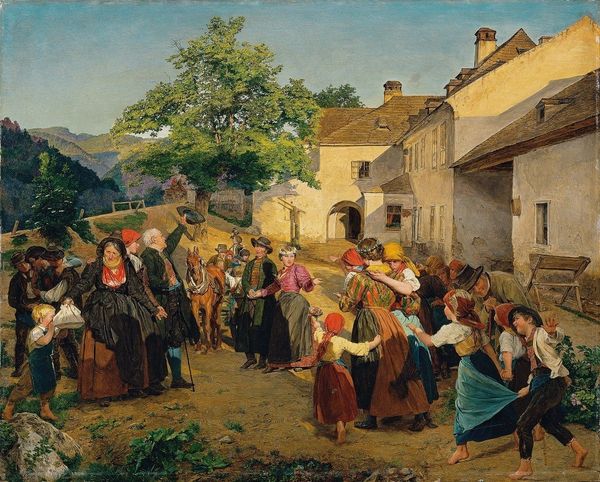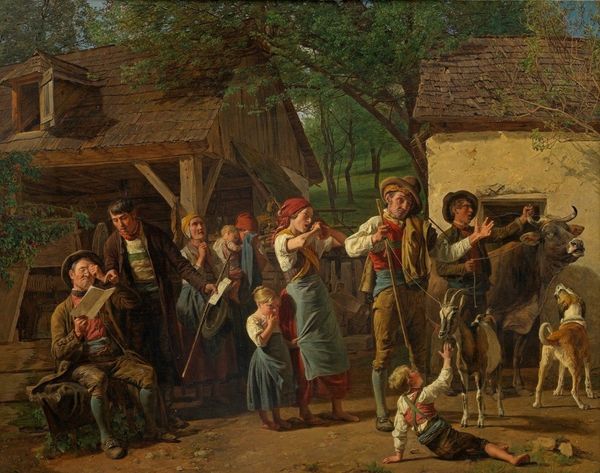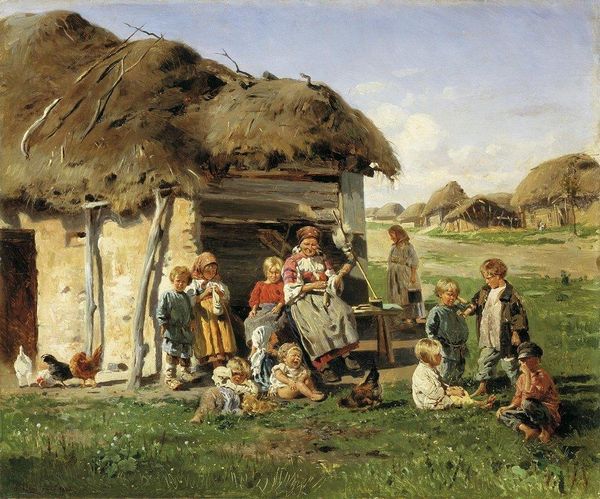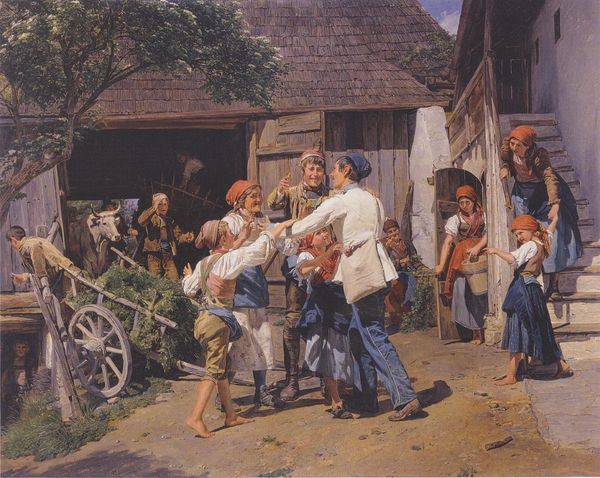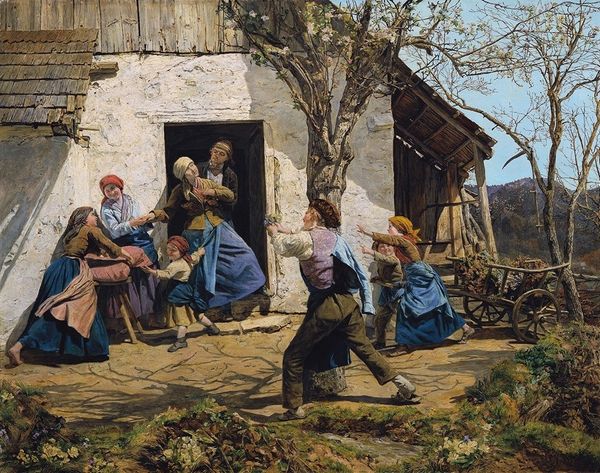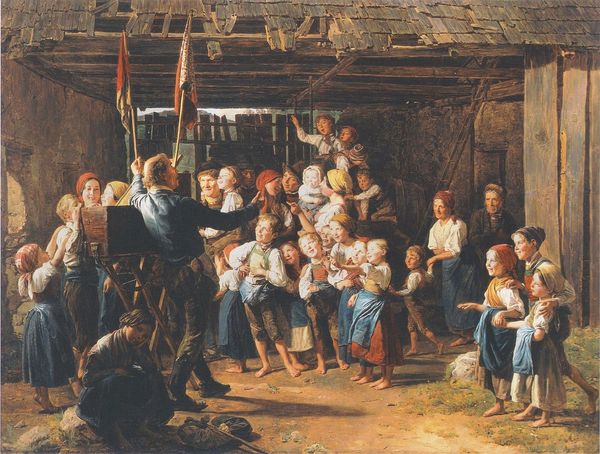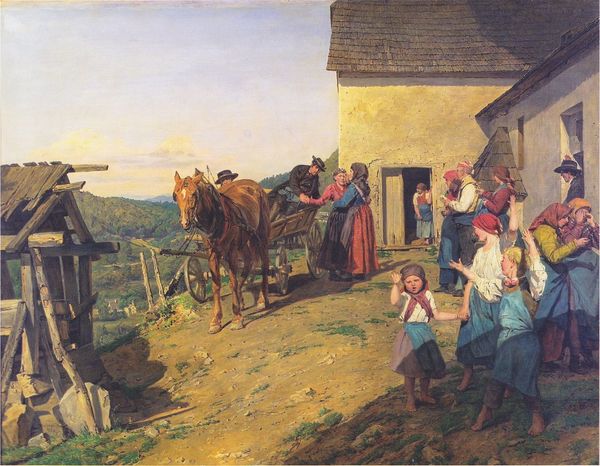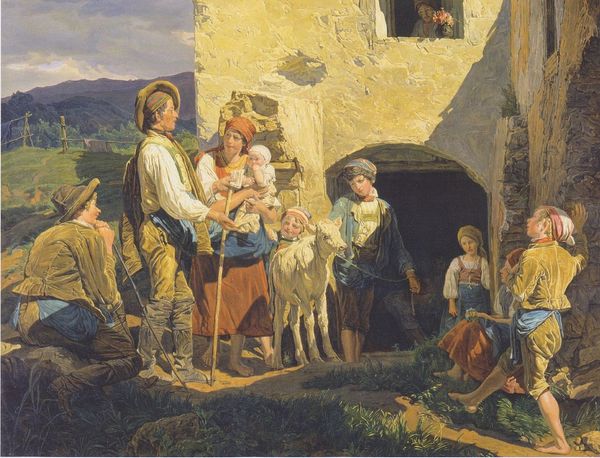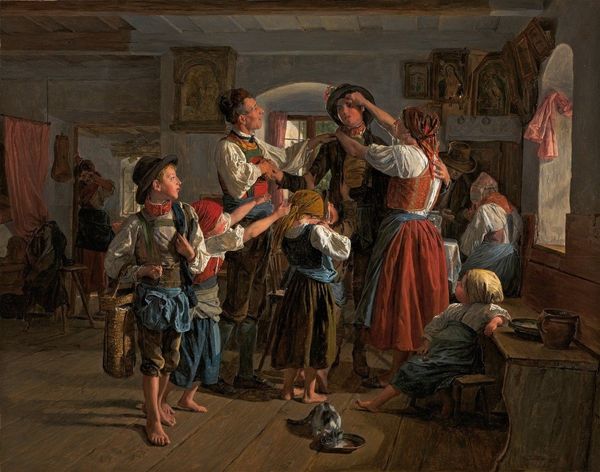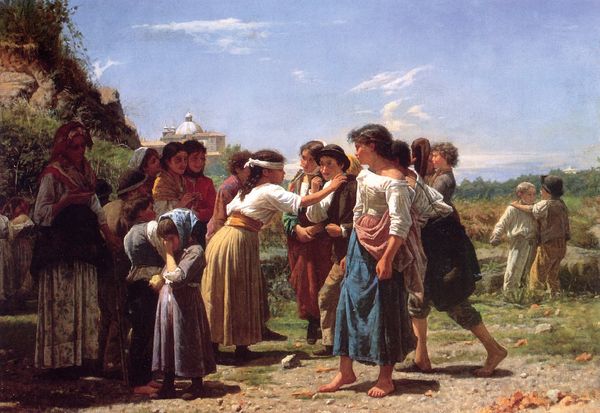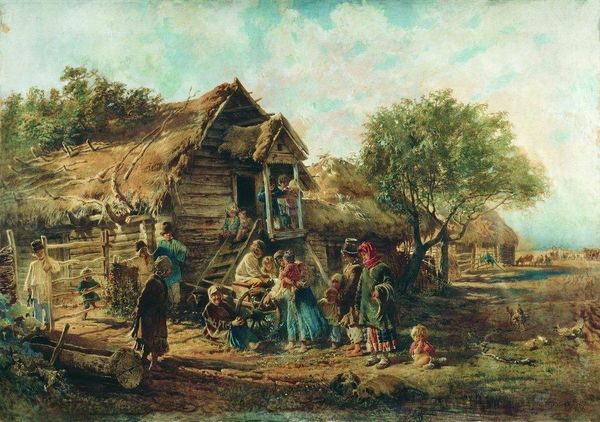
Copyright: Public domain
Editor: This is Ferdinand Georg Waldmüller's "Return from the Church Fair," painted in 1859, using oil paints. There's such a vibrant energy here! What catches your eye, and how do you interpret this bustling scene? Curator: The work’s apparent celebration of community is exactly where its politics lie. Waldmüller, painting in mid-19th century Austria, offers a romanticized, possibly nostalgic, view of rural life. Consider who is centered and who is absent. Do we see the realities of peasant labor or poverty reflected here, or are those realities being deliberately softened, even erased? How does this idyllic portrayal serve the dominant ideology of the time? Editor: That’s interesting. I was mostly drawn to the lively figures and bright colors, but I hadn’t considered what might be missing. So, you're saying it’s not just a snapshot of a fair, but also a statement – perhaps even a strategic one? Curator: Precisely! The Realist style can mask a lot. Consider, too, how gender roles are presented. The women and children are prominently featured in a domestic sphere; what stories are silenced by this? Think about the rise of nationalism during this period. Are these ‘happy peasants’ actually symbolic of a particular nationalist ideal being promoted at the time? What could that mean in a diverse empire like Austria? Editor: So it’s less about what’s there and more about the historical forces shaping what’s *not* shown, and how what is shown is framed. Thanks, that gives me so much to think about in terms of artistic and societal messaging. Curator: It's a reminder to engage with art critically, understanding that paintings are rarely neutral documents but instead active participants in broader conversations about power, identity, and social structures.
Comments
No comments
Be the first to comment and join the conversation on the ultimate creative platform.
